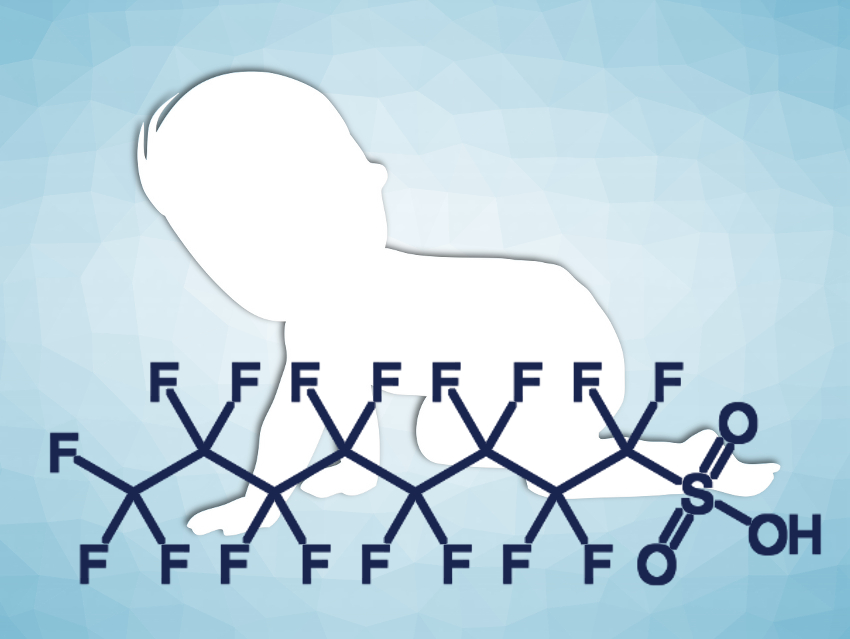Per- and polyfluoroalkyl substances (PFAS) are a class of organoflourine compounds used, e.g., to produce fluoropolymers for use in stain repellents, polishes, paints, and coatings. PFAS were originally considered inert, but they can accumulate in organisms and have negative health effects. Compounds such as perfluorooctane sulfonate (PFOS, corresponding acid pictured), perfluorooctanoate (PFOA), and perfluorooctane sulfonamide (FOSA) are, therefore, being banned or phased out in many countries and replaced with compounds such as 3H-perfluoro-3-[(3-methoxy-propoxy)propanoic acid] (ADONA) or 9-chlorohexadecafluoro-3-oxanone-1-sulfonic acid (trade name “F53-B”). However, there is not much information about human exposure to these PFAS alternatives, and some of them might also be harmful.
Raed Awad, Stockholm University and Swedish Environmental Research Institute, both Stockholm, Sweden, Jonathan P. Benskin, Stockholm University, and colleagues have measured levels of both “older” and alternative PFAS in breast milk from mothers in Shanghai, Jiaxing, and Shaoxing, China, and Stockholm, Sweden, to evaluate the exposure of infants to these substances. The breast milk samples were analyzed using ultra-performance liquid chromatography coupled to mass spectrometry (UPLC-MS/MS).
The team found that PFOA, PFOS, and F53-B occurred at the highest concentrations among all PFAS (up to 411, 321, and 976 pg mL−1, respectively) in the China-derived samples, while the samples from Stockholm mainly contained PFOA and PFOS, but at lower levels (up to 89 and 72 pg mL−1, respectively). F53-B is produced and used only in China, which explains its absence in the Swedish samples. ADONA was only detected at very low concentrations in the samples from China and was not detectable in the Swedish breast milk. According to the researchers, the high concentrations of F53-B in the Chinese breast milk samples indicate that human exposure assessments focused only on “older” PFAS substances could severely underestimate the overall exposure in breastfeeding infants.
- Emerging per- and polyfluoroalkyl substances (PFAS) in human milk from Sweden and China ,
Raed Awad, Yihui Zhou, Elisabeth Nyberg, Shahla Namazkar, Wu Yongning, Qianfen Xiao, Yaije Sun, Zhiliang Zhu, Åke Bergman, Jonathan P. Benskin,
Environ. Sci. Process. Impacts 2020.
https://doi.org/10.1039/d0em00077a
Also of Interest
- Nursing, Gut Bacteria, and the Immune System,
Michael Breuer, Melanie Weingarten,
ChemViews Mag. 2020.
https://doi.org/10.1002/chemv.202000062
Which components are found in human breast milk and in infant formulas?



